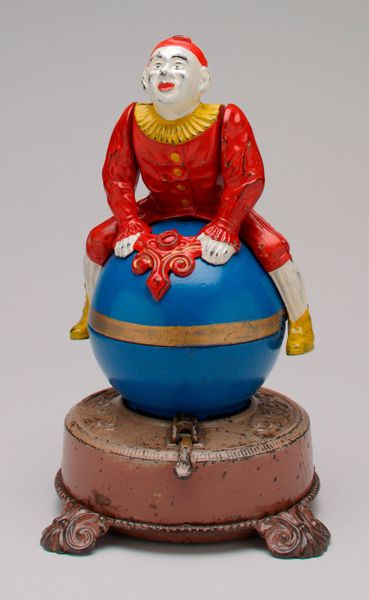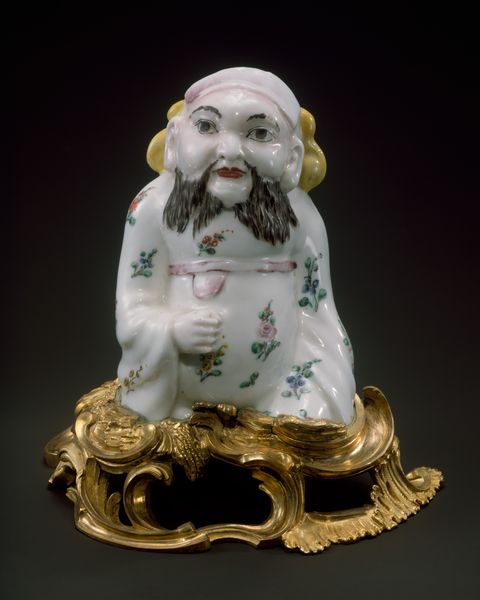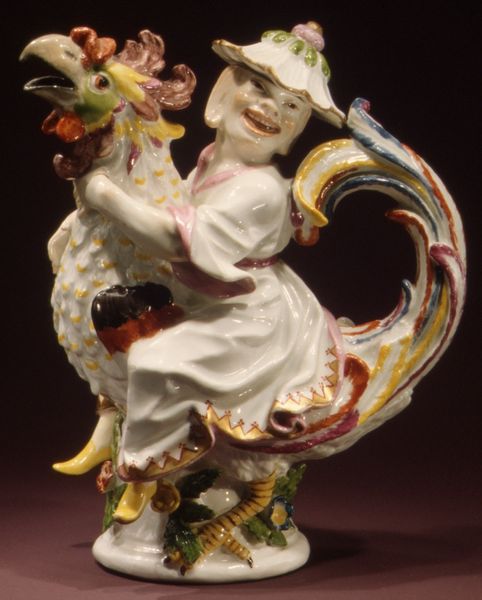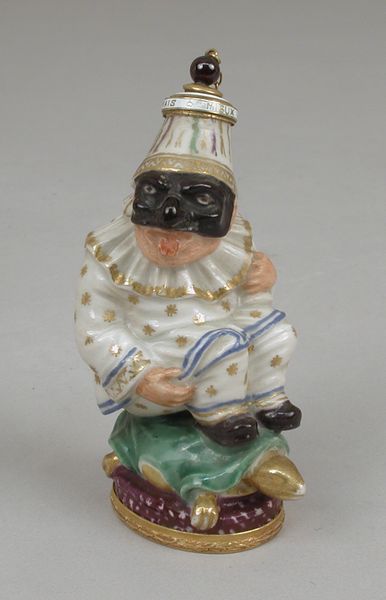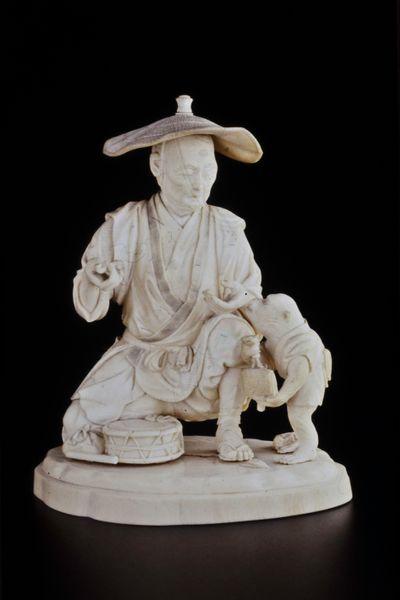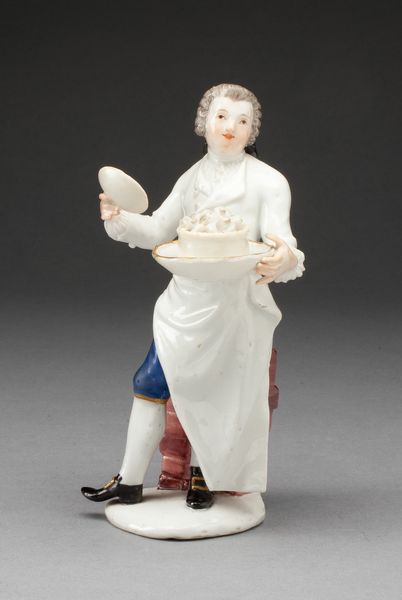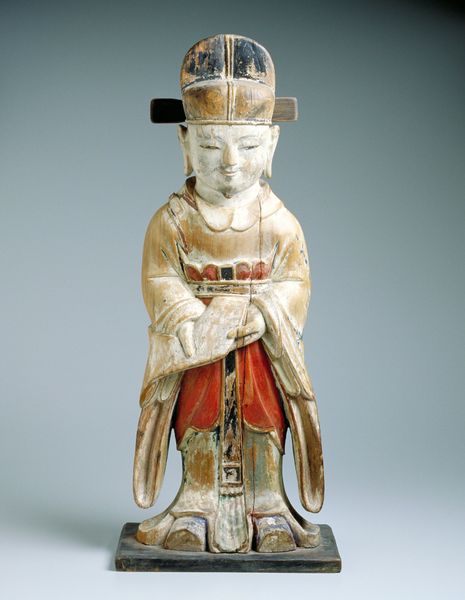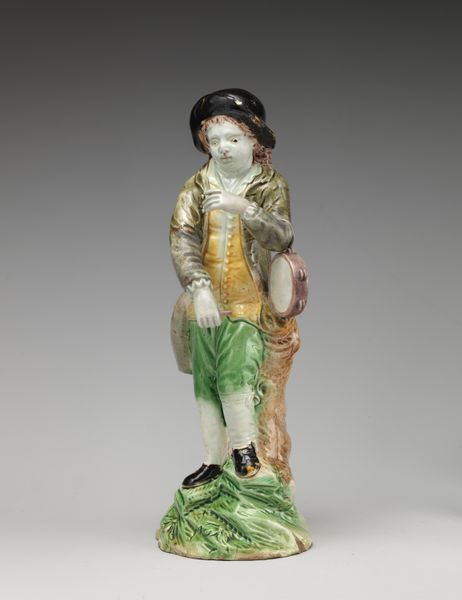
ceramic, porcelain, sculpture
baroque
ceramic
porcelain
figuration
sculpture
decorative-art
miniature
Dimensions: Height: 6 1/2 in. (16.5 cm)
Copyright: Public Domain
Curator: I find this baroque decorative artwork, a "Pair of seated figures with globes" crafted sometime between 1730 and 1740, utterly charming. Editor: Charming, yes, but also quite curious! There’s an almost unsettling theatricality to them. That intense gaze and the miniaturized globes – it feels performative in some way. Curator: It speaks to the burgeoning Age of Exploration, I think. The globe, of course, is a classic symbol, often representing knowledge, power, and the expanding worldview of the 18th century elite. The fact that they're crafted from porcelain really emphasizes this— it takes that worldly vision and refines it for display in privileged households. Editor: The colonial undertones are thick. These figures, probably intended to represent scholars, are essentially codifying a Western gaze, possessing the world through cartography and manufacture. That decorative floral pattern on their robes juxtaposed against the stark map, creates this unsettling sense of ornamental imperialism. Curator: While it’s impossible to divorce the artwork from the colonial context, I wonder if it doesn’t also gesture to something more universal? The sphere, as a form, has long been a symbol of totality, completion, the self contained within the world. The act of sitting, the posture of contemplation – these can resonate across many cultural traditions. Editor: Perhaps. But I think we have to remain vigilant against universalizing readings that sanitize the colonial project. Even in contemplation, the figures literally support a globe that visually centers Europe. That centering has profound implications in shaping understandings of cultural and racial hierarchies that still reverberate today. Curator: Do you believe the creator, the artisan, intended this as a consciously imperialist statement? Editor: Intentionality isn't always the point, is it? Art operates within, and is shaped by, prevailing power structures, often unconsciously reproducing them. Analyzing it becomes about untangling that complicated legacy. Curator: So we look at symbols embedded within broader narratives. Even decorative art whispers cultural and political echoes through time. Editor: Exactly. And the way those echoes shape our present is what gives pieces like these their continued, albeit fraught, relevance.
Comments
No comments
Be the first to comment and join the conversation on the ultimate creative platform.
